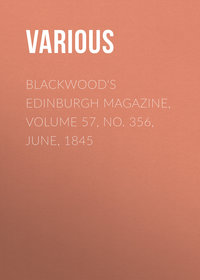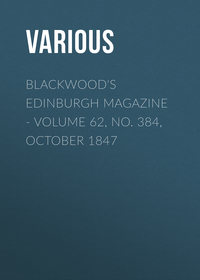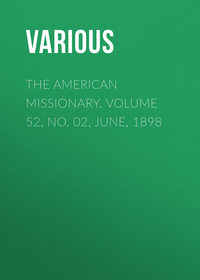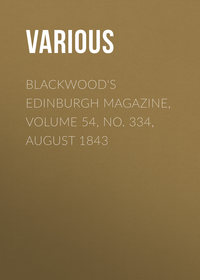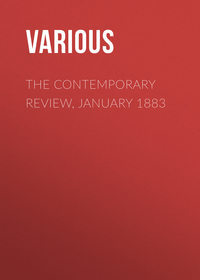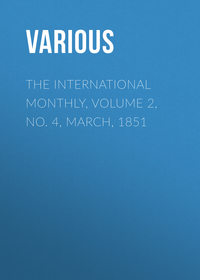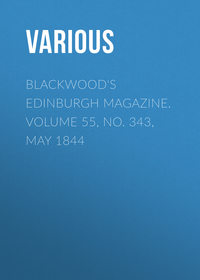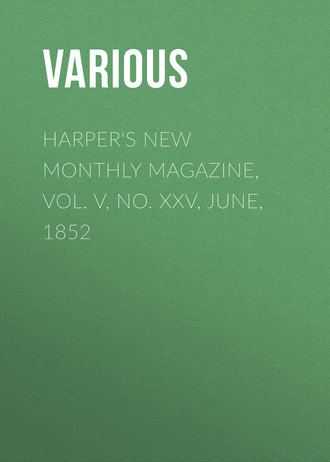 полная версия
полная версияHarper's New Monthly Magazine, Vol. V, No. XXV, June, 1852
The hair is ornamented with diamonds. Two plats beginning at each side of the centre parting of the forehead, are raised, and tied in the middle; they then descend at the sides, where they are enveloped by curls thrown backward. Behind, the hair twisted in a cord, forms four circles. The torsades are fastened by a jeweled comb. In that part which constitutes the bandeaux are three mounted agrafes on each side. The skirt is of white taffeta, with a lace flounce, of twelve inches in depth. Tunic-robe of white moire antique. The body is open in front, and trimmed with a pointed berthe, slit up at the shoulders. This berthe is decorated, at a distance of about half an inch from the edge, with a gold band of nearly an inch in width, fastened by a gold cord, passing through seven eyelet-holes. It is the same at the slit on the shoulders, only in these places the cords terminate in gold tassels hanging down. The edge of the tunic is ornamented with gold galloon, the lower galloon is one and a quarter inches wide, the second three-fourths of an inch, the third three-eighths. The first of these galloons is three-fourths of an inch from the edge, and the distance between them is half an inch, so that from the edge to the top of the last galloon the depth is about four inches. Each opening of the tunic has a conical shape; the corners are rounded. The sleeves are round, and edged with galloon. The chemisette, which reaches above the low front of the body, is composed of lace like the flounce, and forms fan-shaped fluted plaits, confined by a thread passing through, and supported by the lacing of the front.
The two following out-door costumes are decidedly pretty:
Carriage Costume. —Jupe of lilac silk, with three deep flounces; there is a figured band at the edge of each flounce woven in the material; body à la veste of purple velvet fitting close; it is open in the front, and has a small collar and lapel. The sleeves are wide; they have a broad cuff which turns back à mousquetaire. Waistcoat of white moire antique: it is closed at the throat and waist, it is then left open to show the frill of the habit-shirt. Transparent bonnet of light green crèpe, trimmed with white blonde: the brim is lined with a broad blonde with a deep vandyked edge, the points of which come to the edge of the brim: inside trimmings and strings of shaded ribbon, long shaded feather drooping on the right side.
Promenade Costume. – Silk dress, the skirt with three flounces: a rich chinée pattern is woven at the edge of each flounce, the last being headed by a band of the same. The body is plain, opens in the front nearly to the waist; the sleeves are wide, three-quarter length, and like the corsage, are finished to correspond with the flounces. Manteau à la valerie, this manteau takes the form of the waist, and is rounded gracefully at the back; it is embroidered and trimmed with a rich fringe en groupes: the fringe with which the cape is trimmed, reaches nearly to the waist: the ends, which are square in front, have a double row of fringe and embroidery. The bonnet is a mixture of white crèpe and fine straw; the strings shaded, to correspond: placed low at each side are feather rosettes shaded pink and white.
In the materials, we must call the attention of our fair readers to the unique and beautiful silks for dresses; besides the elegant designs woven at the edge of the flounce, there are patterns woven for each part of the dress – the sleeves, corsage, and basquire.
We give plates of two very elegant caps, which have made their appearance. Is a dress cap, of tulle and blonde, trimmed with ribbon and small banches of flowers. Is a morning cap, entirely of lace insertion, and between each row is a narrow gauze ribbon, rolled or twisted. The borders of rich lace.
1
Entered, according to Act of Congress, in the year 1852, by Harper and Brothers, in the Clerk's Office of the District Court of the Southern District of New York.
2
The Te Deum, is an anthem of praise, sung in church as on occasion of thanksgiving. It is so called from the first words "Te Deum laudamus," Thee God we praise.
3
Continued from the May Number.
4
At that date the law of mesne process existed still.
5
Continued from the May Number.


